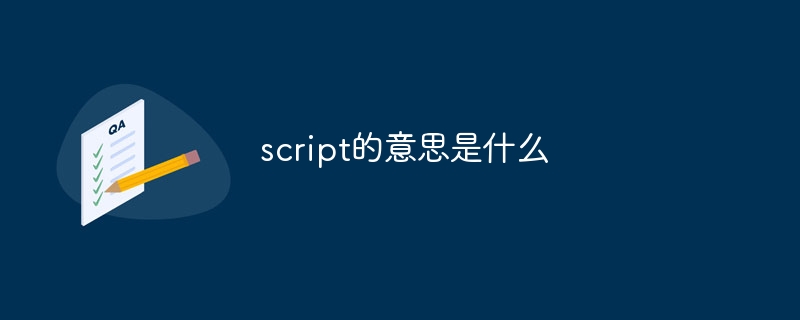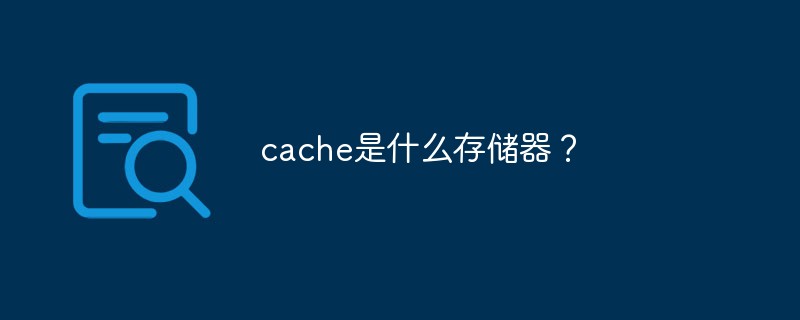Intended Audience
Introduction
The Caching Imperative
The Script Caching Solution
The Caching Script
Implementation: Avoiding Common Pitfalls
Summary
The Script
About the Author
Intended Audience
This article is intended for the PHP programmer interested in creating a static HTML cache of dynamic PHP scripts. The article has been written specifically for an Apache server running PHP scripts, but the ideas described here are applicable to almost any Web environment.
The article assumes that you have some experience with creating dynamic Web sites and that you are familiar with HTTP – at least enough to know what a "404 Page Not Found" error means and the definition of the environment variables $REQUEST_URI and $DOCUMENT_ROOT.
Introduction
The benefits to using dynamic Web pages are well known, but there are nonetheless two significant drawbacks: speed and search engine accessibility.
Speed: The speed in which a user receives a page after clicking a link or entering a URL is a crucial factor for a Website. It depends on dozens of variables, some of which you may have control over and some of which you don’t. There are countless bottlenecks in the process, and it’s probably impossible to fix them all. This bottleneck we will tackle here is the one caused by waiting for the server side scripts to create the HTML output.
Search Engine Accessibility: By this I mean the ability of search engines to point to a particular Web page. Most search engines function by using a "Crawler" program. Crawler programs begin on a certain page and navigate through the links on it. Every page a crawler visits is then indexed on the search engine’s database.
Most crawlers, however, are only programmed to navigate through static (HTML) pages – not dynamic ones. So, for example, pages with URLs that contain a "?" character (indicating a query string) or a filename ending with ".php" will not be accessed. Consequently, crawlers will not index these pages, making your site less accessible to new visitors.
Note: A crawler cannot tell the difference between an HTML file’s output and a PHP file’s. They both send the same content type. Therefore, most crawlers simply decide according to the filename and/or if there is a query string in the URL – that is, if the URL contains a "?".
This article discusses a procedure for dealing with both of these drawbacks. The article’s script should be sufficient for use under most circumstances – but in particular, small scale Web sites and individual script pages that are only moderately subject to change (dynamics).
The Caching Imperative
Simply speaking, caching entails storing the output of one or more dynamic scripts into static HTML files. A visitor to your site would be directed to these HTML files rather than to their original dynamic versions.
The mechanism for doing so can be described using a Magazine’s Web site as an example.
A Magazine’s Web site would likely have a database that contained numerous articles and stories. You would normally have a script (say "show_article.php") that:
Receives an article ID number
Reads the article’s content from the database
Puts it into some kind of HTML template
Formats the whole page with navigation links etc...
Sends the resulting HTML to the visitor’s browser
As such, in the site’s homepage you might have links to current articles coded as follows:
Cache Article
Now, articles tend to be static and you would hope that the site was operating under heavy request loads (because it’s popular!!). Consequently, requests for each article would undergo extensive processing – meaning access database, search article, and display it.
Moreover, when you depend on other database information such as layout specifications, then the process would take even longer. Lastly, a search engine’s crawler would not even index the content of your article(s) because the link to the article page contains a "?" and a ".php" extension, and thus the crawler would not follow it.
Therefore, to alleviate these problems a Webmaster should at least consider implementing some form of caching system.
When You Should Cache a Script
While the caching solution presented in this article will be beneficial to many users, there will be circumstances when you will prefer not to cache your scripts at all or use a different caching method.
Scripts that must deal with frequently changing data such as stock values, discussion forums or process forms are not fit for the system described in this article. Under these cases, the decision is up to you – you might decide to leave them dynamic or you might opt for a more advanced solution such as using the Zend Cache.
Note: Using the Zend Cache for your site caching needs would render the system described in this article totally unnecessary (though you might still want to read it in order to improve your PHP skills !). The Zend Cache provides you with a complete turnkey caching solution. For a complex site I would advise buying it (and I’m not just saying this because this is Zend’s site but because the application is both easier to maintain and is well supported.
On the other hand, if your site only features a few basic scripts, then you probably do not need to bother with caching at all.
Nonetheless, if you:
Feature (at least relatively) complex scripts on your site,
Wish to be able to handle numerous page hits,
and/or
Cannot afford the cost of a commercial caching solution,
then I hope this caching mechanism will serve you well.
For pages that do not need to be kept up to the minute, the speed of this system cannot be beaten since it creates pure static HTML pages.
The Script Caching Solution
The standard caching system solution is to generate static HTML files. From the earlier example, then, the link to the cache article will now be coded as follows:
Cache Article
id_123.html contains the output generated by the show_article.php script when it is called using id=123.
It is a good practice to store all of the cached files under a single directory of their own (in the above example, it was the "/cache" directory) with sub-directories named for each creating dynamic script (i.e. "show_article/" directory).
In this manner, the cached files are separated from the dynamic scripts, making site maintenance that much easier to manage – for example, you can easily perform actions such as deleting old cached files generated by a certain script. More importantly, however, it simplifies cache.php’s string replacement mechanism. For more details, refer to cache.php details.
Be aware that links to your dynamic pages will need to be switched to point to their respective HTML scripts (output).
So, if you would want article #123 to be cached, for example, you would simply change the link from "show_article.php?id=123" to "cache/show_article/id_123.html".
Note: The HTML files do not have to be defined before assigning these new links. A script is not cached until it has been called by the Server.
Furthermore, since the HTML files will reside under a different URL, any relative paths from within those files (e.g. "http://www.myserver.com/path/to/images/art.gif") will need to be corrected. Therefore, consider working with absolute paths such as "http://www.myserver.com/path/to/images/art.gif" or "/path/to/images/art.gif" – note the preceding "/" , meaning relative to the current server .
Alternatively, you can add a
Note: It is NOT recommended that you change the paths to relative paths from the cache directory (such as "../../path/to/images/art.gif"). This is because the whole point of this caching system is that files may or may not be cached according to your preferences. You will want to have the links working whether the HTML is read from a cached file (under the /cache/ directory) or from the dynamic script (in some other directory); Absolute URLs guarantee this.
The Caching Script
Central to the caching system is the caching script, itself (cache.php). It reads the dynamic scripts by using fopen(
cache.php, itself, only uses basic PHP. It can also function independently of any other script. Consequently, you do not need to modify any existing scripts in order to implement script caching.
Activating the Caching Script
The recommended method for activating cache.php is to do so by way of the " 404 page not found" event, thereby automating its execution and minimizing its impact on the site.
The "404 Page Not Found" error informs the visitor that the server could not find his/her requested page. Most of the time a standard "Page Not Found" page is displayed. However, since most Web servers enable you to customize your error pages, you can call the cache.php script when a file is not found in place of displaying the default "Page Not Found" page.
For example, in Apache, you can edit your configuration file (httpd.conf and located in the "apache/conf/" directory) by adding the following statement :
ErrorDocument 404 /cache.php
This statement assigns responsibility for handling a 404 error to the cache.php script. Apache will call this script when a file is not found in place of the default "Page Not Found" page.
Warning: Be sure that a copy of the original configuration file is saved before changing it. It is always a good idea to keep a copy of any configuration file before changing it. If you unintentionally corrupted it, you will always be able to resort to the original file.
Secondly, add the cache.php script to your system before applying the change. Otherwise, the 404 error will not find the cache.php script and this will lead to another 404 error etc. resulting in an endless loop. (Actually Apache handles that case by issuing a 500 error, but you might run into a server/version does not handle it properly)
The major benefit to caching using the 404 error is the ability to do so both automatically and on demand, provided you have initially defined the links to the HTML scripts. The absence of a "linked" HTML file triggers the 404 error message, prompting cache.php to define the file.
This first visitor to a file, however, activates the slower, dynamic file by way of the caching script. When cache.php is triggered, the script determines the link to the original dynamic file and generates the HTML output. In doing so, it displays this output to the visitor before saving into the new HTML (static) file.
cache.php is only generated for the first visitor. Once the HTML static file has been created, the defined link becomes valid and the 404 error is no longer generated upon subsequent requests. However, if the data to the dynamic script changes (e.g. someone updated the article) you could simply remove the cached .html file, leading the way for the 404 error to be triggered once more.
Note: Continuing with our earlier example, if you changed show_article.php, itself, such that its HTML output will be altered, you will want to "clean" out your cache, meaning deleting all of the files under the "show_article/" directory. Consequently, your cache will (eventually) be refreshed with the new HTML.
Tip: If you do not want to cache a certain file, simply leave the (original) link to the dynamic file as is (meaning don’t define an HTML link for that file).
cache.php Details
The caching script (cache.php) receives the location of the (non-existent) static file via $REQUEST_URI and its purpose is to ultimately generate this static file. ($REQUEST_URI is parsed using a str_replace()command).
cache.php initially determines the original dynamic script’s URL using str_replace().The resulting URL is stored in the $maker_URL variable.
The script then opens the dynamic script’s URL and reads its output. This is really quite simple as PHP enables you to do so by using the fopen() function.
Note: fopen() can open a Web page as well as a file. You could read a page from your own site by entering your site’s URL (or "127.0.0.1" which is a reserved IP address that will always point to your local machine).
In the magazine example, you would use:
$read = fopen ( "http://www.newspapersite.com/show_article.php?id=123","r" );
cache.php then reads the dynamic script URL using fread(), just as if it were a file. While reading the HTML, the script saves it all into a variable. You could display it on the screen as the output is being read (as cache.php does) or simply defer its display until the reading has been done.
Lastly, the script opens a local file to save the newly created HTML:
$write=fopen ("cache/show_article/id_123.html","r");
Note: cache.php does not save the static file until it has finished reading from the dynamic script. The saving operation is also quick – as the entire file is saved at once.
Implementation: Avoiding Common Pitfalls
The caching script provided here handles some common traps that might be encountered. I will describe them here in order to give you a better understanding of the script’s action and also help you avoid those pitfalls should you decide to write your own script.
Visitors to the site whose behavior you cannot predict trigger the script’s action. Therefore, create the static file only after you have generated all of the HTML, thereby saving it all at once.
Doing so prevents an incomplete file from being created, due to a first visitor’s decision to view only part of a page but then moving on to another page. Remember, once a file is in the cache, the caching script will not be triggered again. As such, subsequent visitors will see the cached file, even if only part of the actual HTML was saved. cache.php minimizes the latency time by writing to a file, only once all of the HTML has been defined in a single string. The fwrite() command is used.
Two visitors might request the same file simultaneously. If the file was not yet cached, it might mean that both of the scripts will attempt to create the same cached file simultaneously. This will probably lead to problems. To avoid it, cache.php employs flock() when creating the static file. This command locks a file, preventing another script from accessing it until another flock() is issued to unlock the file.
What used to be a query string (e.g. "?id=123&x=1"), now becomes a filename. Different Operating Systems have different file naming conventions. In cache.php, I decided that "=" and "&" will be converted to "_" and "__", respectively. If the need arises (for example, some of your scripts accept strings which contain "_" in their query string), you can modify the script to reflect the convention most suitable for you.
Prepare for genuine 404 events. There might be times when 404 is called because a request was made for a certain file which really does not exist, without relation to the caching system. The caching script accounts for this by checking whether or not the requested file can be found at all. This is done using the file_exists() function. If the file cannot be found, the script displays a "Couldn’t find $REQUEST_URI" and ceases execution. You might want to customize this message to meet with your particular needs, or even add features such as sending automatic email message to the Webmaster when a page is not found (with the $REQUEST_URI value), so you can fix it later.
Summary
Speed is an important factor in dynamic Websites. In this article I described a method of increasing a site’s speed – the effect of which depends on the sites reliance on dynamic scripts. The heavier a script is, the more speed you gain by turning it into a static page. In addition, static pages can be indexed by crawler programs thereby making your site more accessible to new visitors.
There are, however, many different solutions for caching and speeding up dynamic Web pages. The one described here is one of the simplest, yet could be very useful in many cases. Since it works by creating a static HTML page instead of a dynamic page, it is as fast as you can get using a pure software solution.
The script is best set up so it’s triggered by the "404 Page not found" event, thus automating its action and minimizing its impact on the site. Moreover, the script requires that you initially define links inside the HTML to images, JS files and other files as absolute paths. Links to files that you will want to cache, must be changed to point directly to the (resulting) static cache files (even if the static files have not yet been created as the 404 event/cache.php does so automatically).
There are scripts that you might not want to cache. These include scripts that deal with processing forms, displaying rapidly changing data (such as stock prices) or time critical information. Under these circumstances, simply leave the link pointing to the dynamic script.
If your site contains a few small scripts, you may not need to bother with caching at all. On the other hand, if you rely on complex scripts and fresh data, you should use a much more sophisticated solution, such as the Zend Cache. But if you are somewhere in between, I hope this article will be of help to you. If you have any comments, please feel free to email me.
The Script
cache.php
Here is a simple version of the caching script. This version is intentionally simple and meant to be easily read. In practice, you can handle the exceptions more gracefully (a nicer "Page Not Found" page, add "@" before file operations etc.) You might also tailor it to your needs – instead of assuming the creating script end with ".php", for example, you could configure it to be ".php3", ".pl" or some other variation.
Yet this script does the job and can be used as it is.
// example caching script
// get the static HTML file’s location
$cache_file = $REQUEST_URI;
// find out the URL of the dynamic script
// which creates the static file.
$maker_URL = str_replace ( "/cache/" , "/" , $cache_file );
$maker_URL = str_replace ( ".html" , "" , $maker_URL );
$last_slash = strrpos ( $maker_URL , "/" );
// find out the creating script’s name
// and make sure it exists.
$script = substr ( $maker_URL , 0 , $last_slash ) . ".php";
$find = $DOCUMENT_ROOT . $script;
if ( !file_exists ( $find )) {
// if the file does not exist, show a
// File Not Found error -
// echo ("Couldn’t find $REQUEST_URI");
// you can put a nice page here...
exit;
// but don’t forget to exit !
}
// now parse the query string
// here, "_" means "=" and "__" means "&"
// These rules are just personal preferences
$query_str = "?" . substr ( $maker_URL , $last_slash+1 );
$query_str = str_replace ( "__" , "&" , $query_str );
$query_str = str_replace ( "_" , "=" , $query_str );
// and now create the full maker_URL
$maker_URL = "http://" . $HTTP_HOST . $script . $query_str;
// open the maker script and read its output
$read = fopen ( $maker_URL , "r" );
if ( !$read ) {
echo ( "Could not open $maker_URL" );
exit;
}
$HTML_output = "";
// read the HTML output while displaying it
while ($line = fgets ( $read , 256 )) {
$HTML_output.= $line;
echo $line;
}
fclose ( $read );
// finally, save the HTML output
// in a cache file.
$write = fopen ( $DOCUMENT_ROOT . $cache_file , "w" );
if ( !$write ) {
// you might not have permission
// to write in that directory.
echo ( "could not open $writefile for writing" );
exit;
}
// lock the write file and
// write all the HTML into it
if ( !flock ( $write , LOCK_EX + LOCK_NB )) {
// for PHP version // change LOCK_EX to 2
echo ( "could not lock $writefile" );
exit;
}
fwrite ( $write , $HTML_output , strlen ( $HTML_output ) );
flock ( $write , LOCK_UN );
// release lock. For PHP version // change LOCK_UN to 3
fclose ( $write );
?>
 入职后,我才明白什么叫CacheJul 31, 2023 pm 04:03 PM
入职后,我才明白什么叫CacheJul 31, 2023 pm 04:03 PM事情其实是这样的,当时领导交给我一个perf硬件性能监视的任务,在使用perf的过程中,输入命令perf list,我看到了以下信息:我的任务就要让这些cache事件能够正常计数,但关键是,我根本不知道这些misses、loads是什么意思。
 2 个月不见,人形机器人 Walker S 会叠衣服了Apr 03, 2024 am 08:01 AM
2 个月不见,人形机器人 Walker S 会叠衣服了Apr 03, 2024 am 08:01 AM机器之能报道编辑:吴昕国内版的人形机器人+大模型组队,首次完成叠衣服这类复杂柔性材料的操作任务。随着融合了OpenAI多模态大模型的Figure01揭开神秘面纱,国内同行的相关进展一直备受关注。就在昨天,国内"人形机器人第一股"优必选发布了人形机器人WalkerS深入融合百度文心大模型后的首个Demo,展示了一些有趣的新功能。现在,得到百度文心大模型能力加持的WalkerS是这个样子的。和Figure01一样,WalkerS没有走动,而是站在桌子后面完成一系列任务。它可以听从人类的命令,折叠衣物
 使用cache可以提高计算机运行速度这是因为什么Dec 09, 2020 am 11:28 AM
使用cache可以提高计算机运行速度这是因为什么Dec 09, 2020 am 11:28 AM使用cache可以提高计算机运行速度这是因为Cache缩短了CPU的等待时间。Cache是位于CPU和主存储器DRAM之间,规模较小,但速度很高的存储器。Cache的功能是提高CPU数据输入输出的速率;Cache容量小但速度快,内存速度较低但容量大,通过优化调度算法,系统的性能会大大改善。
 script的意思是什么Aug 29, 2023 pm 02:00 PM
script的意思是什么Aug 29, 2023 pm 02:00 PMscript是指剧本或脚本的意思。在电影、电视、戏剧等艺术形式中,script用于描述角色的对话、动作和场景,以及故事的发展和结构。script的编写需要一定的技巧和经验,而且应该生动、有力,能够吸引观众的注意力,并传达出故事的情感和主题。script在电影和电视行业中尤为重要,是创作的基础,决定了电影的故事情节、角色发展和对话内容。script是艺术家们创作和表达的重要工具。
 cache是什么存储器?Nov 25, 2022 am 11:48 AM
cache是什么存储器?Nov 25, 2022 am 11:48 AMcache叫做高速缓冲存储器,是介于中央处理器和主存储器之间的高速小容量存储器,一般由高速SRAM构成;这种局部存储器是面向CPU的,引入它是为减小或消除CPU与内存之间的速度差异对系统性能带来的影响。Cache容量小但速度快,内存速度较低但容量大,通过优化调度算法,系统的性能会大大改善。
 nginx反向代理缓存教程。Feb 18, 2024 pm 04:48 PM
nginx反向代理缓存教程。Feb 18, 2024 pm 04:48 PM以下是nginx反向代理缓存的教程:安装nginx:sudoaptupdatesudoaptinstallnginx配置反向代理:打开nginx配置文件:sudonano/etc/nginx/nginx.conf在http块中添加以下配置来启用缓存:http{...proxy_cache_path/var/cache/nginxlevels=1:2keys_zone=my_cache:10mmax_size=10ginactive=60muse_temp_path=off;proxy_cache
 SpringBoot项目中怎么使用缓存CacheMay 16, 2023 pm 02:34 PM
SpringBoot项目中怎么使用缓存CacheMay 16, 2023 pm 02:34 PM前言缓存可以通过将经常访问的数据存储在内存中,减少底层数据源如数据库的压力,从而有效提高系统的性能和稳定性。我想大家的项目中或多或少都有使用过,我们项目也不例外,但是最近在review公司的代码的时候写的很蠢且low,大致写法如下:publicUsergetById(Stringid){Useruser=cache.getUser();if(user!=null){returnuser;}//从数据库获取user=loadFromDB(id);cahce.put(id,user);returnu
 php提交表单通过后,弹出的对话框怎样在当前页弹出,该如何解决Jun 13, 2016 am 10:23 AM
php提交表单通过后,弹出的对话框怎样在当前页弹出,该如何解决Jun 13, 2016 am 10:23 AMphp提交表单通过后,弹出的对话框怎样在当前页弹出php提交表单通过后,弹出的对话框怎样在当前页弹出而不是在空白页弹出?想实现这样的效果:而不是空白页弹出:------解决方案--------------------如果你的验证用PHP在后端,那么就用Ajax;仅供参考:HTML code<form name="myform"


Hot AI Tools

Undresser.AI Undress
AI-powered app for creating realistic nude photos

AI Clothes Remover
Online AI tool for removing clothes from photos.

Undress AI Tool
Undress images for free

Clothoff.io
AI clothes remover

AI Hentai Generator
Generate AI Hentai for free.

Hot Article

Hot Tools

SAP NetWeaver Server Adapter for Eclipse
Integrate Eclipse with SAP NetWeaver application server.

PhpStorm Mac version
The latest (2018.2.1) professional PHP integrated development tool

DVWA
Damn Vulnerable Web App (DVWA) is a PHP/MySQL web application that is very vulnerable. Its main goals are to be an aid for security professionals to test their skills and tools in a legal environment, to help web developers better understand the process of securing web applications, and to help teachers/students teach/learn in a classroom environment Web application security. The goal of DVWA is to practice some of the most common web vulnerabilities through a simple and straightforward interface, with varying degrees of difficulty. Please note that this software

SublimeText3 English version
Recommended: Win version, supports code prompts!

ZendStudio 13.5.1 Mac
Powerful PHP integrated development environment






